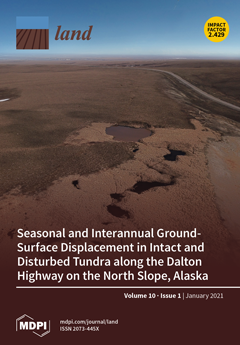This study aimed to assess the compositions and configurations of the urban green spaces (UGS) in urban functional land use areas in Addis Ababa, Ethiopia. The UGS data were extracted from Landsat 8 (OLI/TIRS) imagery and examined along with ancillary data. The results
[...] Read more.
This study aimed to assess the compositions and configurations of the urban green spaces (UGS) in urban functional land use areas in Addis Ababa, Ethiopia. The UGS data were extracted from Landsat 8 (OLI/TIRS) imagery and examined along with ancillary data. The results showed that the high-density mixed residence, medium-density mixed residence, and low-density mixed residence areas contained 16.7%, 8.7%, and 42.6% of the UGS, respectively, and together occupied 67.5% of the total UGS in the study area. Manufacturing and storage, social services, transport, administration, municipal function, and commercial areas contained 11.6%, 8.2%, 6.6%, 3.3%, 1.3%, and 1% of the UGS, respectively, together account for only 32% of the total UGS, indicating that two-third of the UGS were found in residential areas. Further, the results showed that 86.2% of individual UGS measured less than 3000 m
2, while 13.8% were greater than 3000 m
2, demonstrating a high level of fragmentation. The results also showed that there were strong correlations among landscape metrics, while the relationship between urban form and landscape metrics was moderate. Finally, more studies need to be conducted on the spatial pattern characteristics of UGS using very high-resolution (VHR) images. Additionally, future urban planning, design, and management need to be guided by an understanding of the composition and configuration of the UGS.
Full article





